Abstract
Tigemonam, a novel, orally administered monobactam, exhibited potent and specific activity in vitro against members of the family Enterobacteriaceae, Haemophilus influenzae, and Neisseria gonorrhoeae. Its activity was variable to poor against gram-positive bacteria, Acinetobacter spp., Pseudomonas aeruginosa, and anaerobes. Within its spectrum of activity, tigemonam was far superior to oral antibiotics currently available, including amoxicillin-clavulanic acid, cefaclor, and trimethoprim-sulfamethoxazole. In addition, tigemonam was superior to cefuroxime, which is under development as an oral pro-drug, and more active than cefixime against several genera of the Enterobacteriaceae. The activity of tigemonam against the enteric bacteria, Haemophilus species, and Neisseria species was, in general, comparable to that of the quinolone norfloxacin. The excellent activity of tigemonam against beta-lactamase-producing bacteria reflected its marked stability to hydrolysis by isolated enzymes. The expanded spectrum of activity against gram-negative bacteria observed with tigemonam thus extends oral beta-lactam coverage to include members of the Enterobacteriaceae that are intrinsically or enzymatically resistant to broad-spectrum penicillins and cephalosporins.
Full text
PDF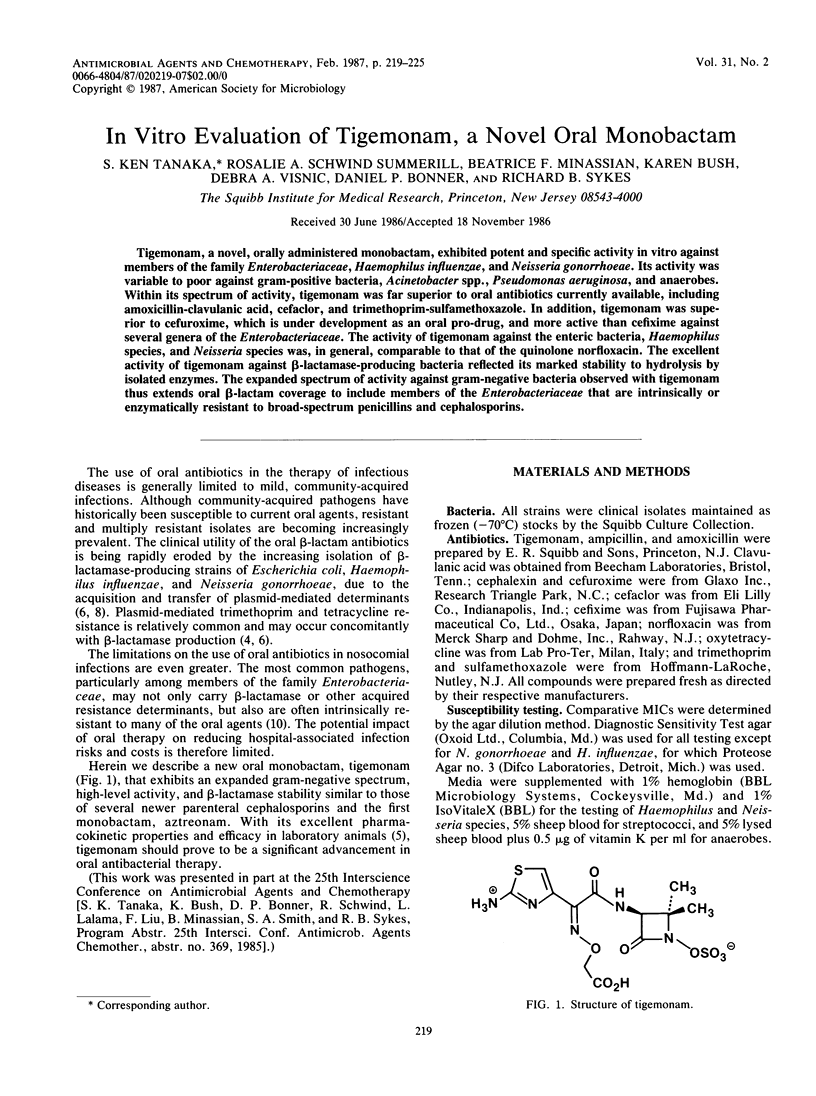

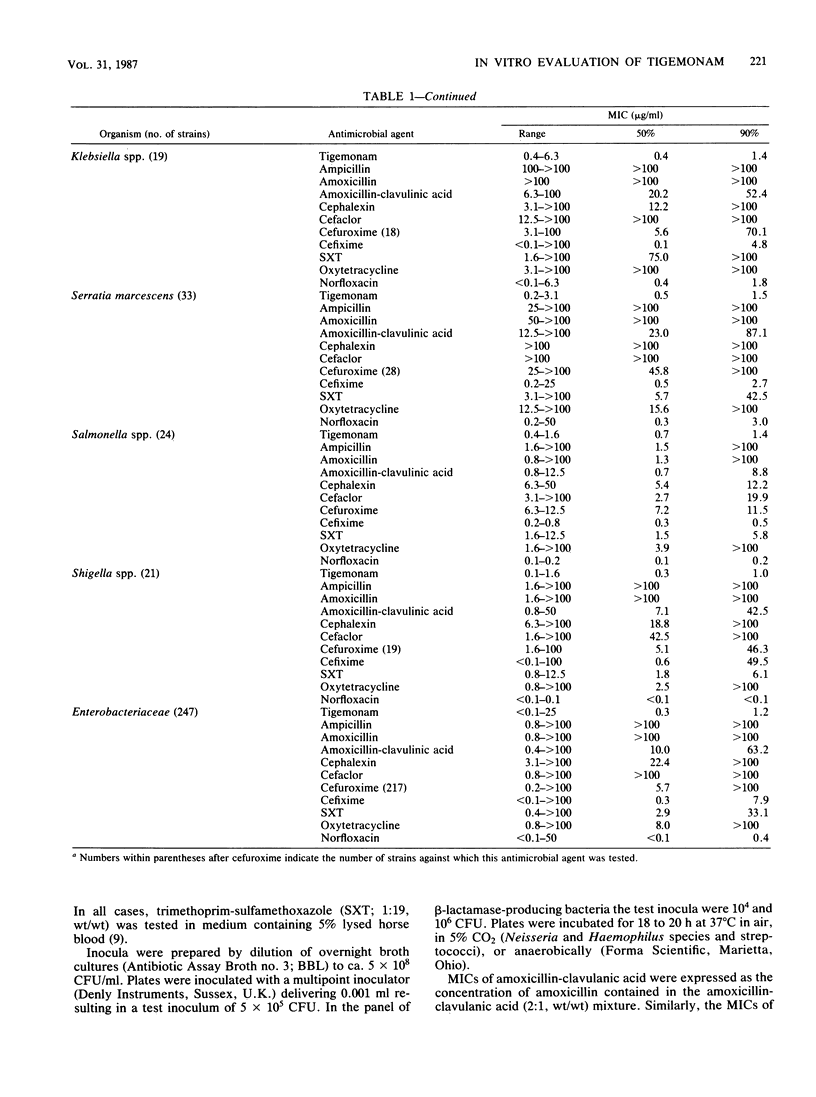

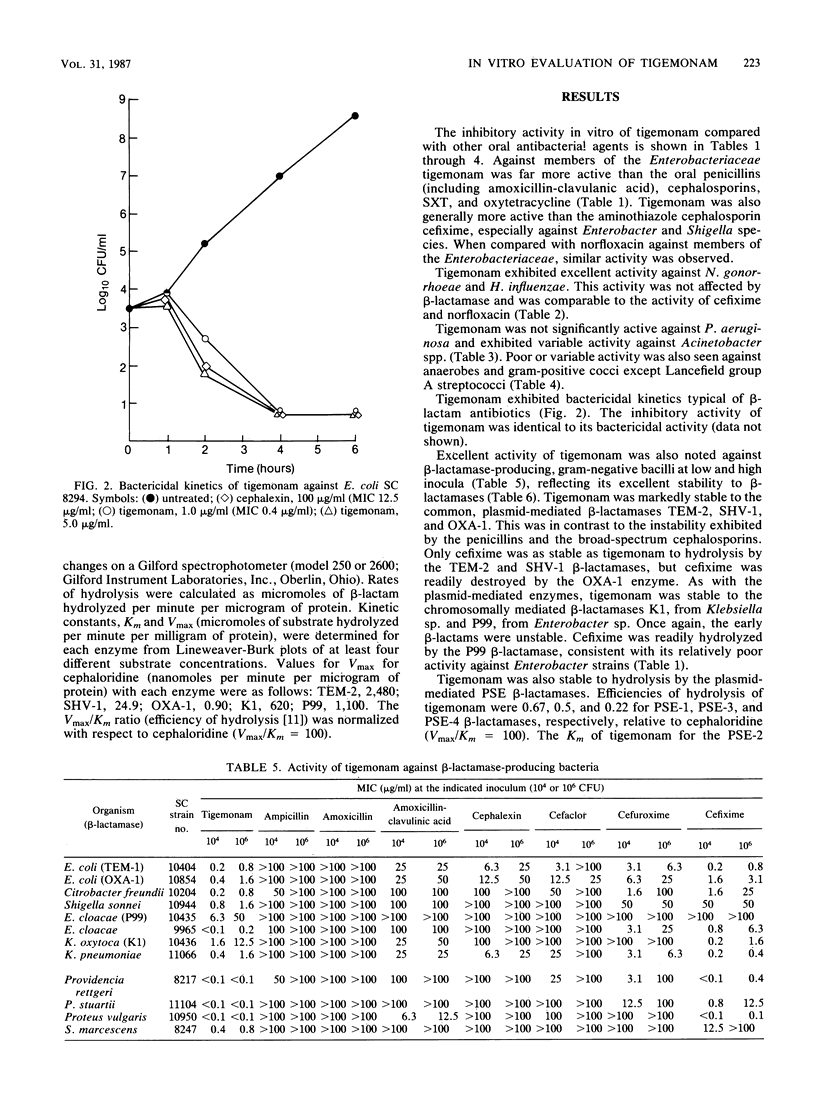
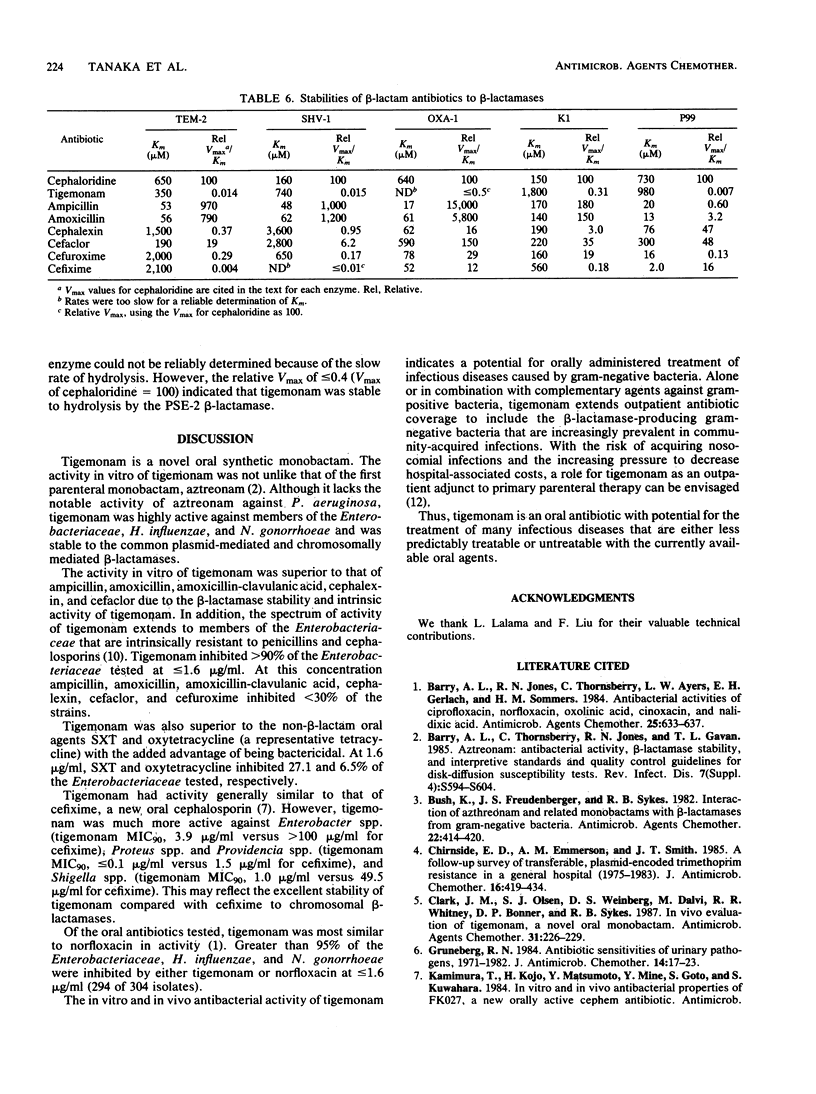
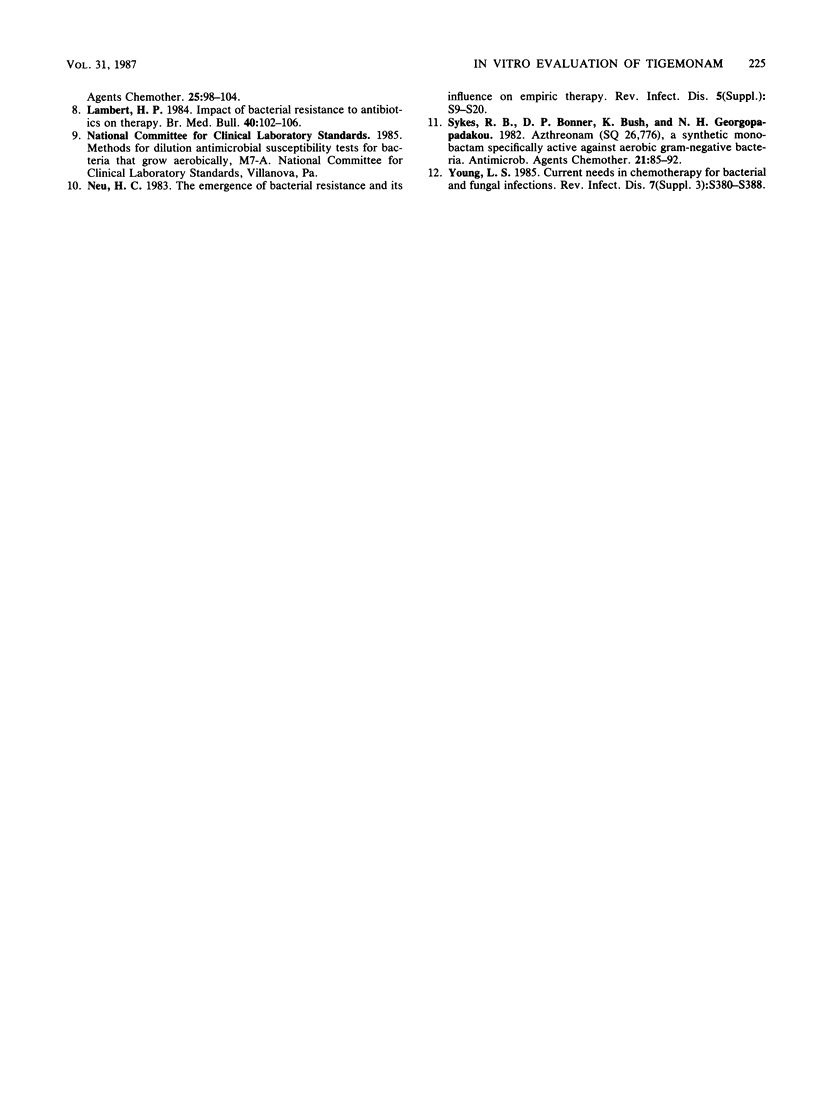
Selected References
These references are in PubMed. This may not be the complete list of references from this article.
- Barry A. L., Jones R. N., Thornsberry C., Ayers L. W., Gerlach E. H., Sommers H. M. Antibacterial activities of ciprofloxacin, norfloxacin, oxolinic acid, cinoxacin, and nalidixic acid. Antimicrob Agents Chemother. 1984 May;25(5):633–637. doi: 10.1128/aac.25.5.633. [DOI] [PMC free article] [PubMed] [Google Scholar]
- Barry A. L., Thornsberry C., Jones R. N., Gavan T. L. Aztreonam: antibacterial activity, beta-lactamase stability, and interpretive standards and quality control guidelines for disk-diffusion susceptibility tests. Rev Infect Dis. 1985 Nov-Dec;7 (Suppl 4):S594–S604. doi: 10.1093/clinids/7.supplement_4.s594. [DOI] [PubMed] [Google Scholar]
- Bush K., Freudenberger J. S., Sykes R. B. Interaction of azthreonam and related monobactams with beta-lactamases from gram-negative bacteria. Antimicrob Agents Chemother. 1982 Sep;22(3):414–420. doi: 10.1128/aac.22.3.414. [DOI] [PMC free article] [PubMed] [Google Scholar]
- Chirnside E. D., Emmerson A. M., Smith J. T. A follow-up survey of transferable, plasmid-encoded trimethoprim resistance in a general hospital (1975-1983). J Antimicrob Chemother. 1985 Oct;16(4):419–434. doi: 10.1093/jac/16.4.419. [DOI] [PubMed] [Google Scholar]
- Clark J. M., Olsen S. J., Weinberg D. S., Dalvi M., Whitney R. R., Bonner D. P., Sykes R. B. In vivo evaluation of tigemonam, a novel oral monobactam. Antimicrob Agents Chemother. 1987 Feb;31(2):226–229. doi: 10.1128/aac.31.2.226. [DOI] [PMC free article] [PubMed] [Google Scholar]
- Grüneberg R. N. Antibiotic sensitivities of urinary pathogens, 1971-82. J Antimicrob Chemother. 1984 Jul;14(1):17–23. doi: 10.1093/jac/14.1.17. [DOI] [PubMed] [Google Scholar]
- Lambert H. P. Impact of bacterial resistance to antibiotics on therapy. Br Med Bull. 1984 Jan;40(1):102–106. doi: 10.1093/oxfordjournals.bmb.a071938. [DOI] [PubMed] [Google Scholar]
- Neu H. C. The emergence of bacterial resistance and its influence on empiric therapy. Rev Infect Dis. 1983 Mar-Apr;5 (Suppl 1):S9–20. doi: 10.1093/clinids/5.supplement_1.s9. [DOI] [PubMed] [Google Scholar]
- Sykes R. B., Bonner D. P., Bush K., Georgopapadakou N. H. Azthreonam (SQ 26,776), a synthetic monobactam specifically active against aerobic gram-negative bacteria. Antimicrob Agents Chemother. 1982 Jan;21(1):85–92. doi: 10.1128/aac.21.1.85. [DOI] [PMC free article] [PubMed] [Google Scholar]
- Young L. S. Current needs in chemotherapy for bacterial and fungal infections. Rev Infect Dis. 1985 Jul-Aug;7 (Suppl 3):S380–S388. doi: 10.1093/clinids/7.supplement_3.s380. [DOI] [PubMed] [Google Scholar]


